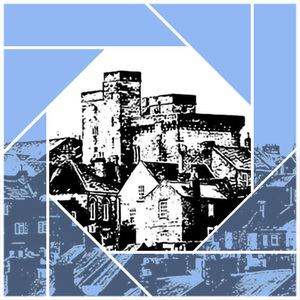Time-lapse photography enables us to see movements that we might otherwise miss, as it speeds up time. Past approaches to time-lapse involved having to take individual photographs at regular points in time and then make them viewable as a movie, almost like a nickelodeon. Nowadays, however, a number of digital cameras have the facility for running time-lapse programmes to create a movie file, making the whole process much more straightforward.
The full-frame Nikons I use require the basic shot to be set up first in photo mode, shifting then to movie mode to set the Interval, and the Shooting Time. There is also an option for Exposure Smoothing if the conditions could involve varying light levels. The end product is a movie, rather than a string of frames to form a movie from, which would be the case if using an Interval Timer programme. The Time-Lapse also provides some options for movie resolution and format, the choice is determined by how it is intended to be viewed.
Many modern camera systems have an integrated interval shooting function. For those who use an older system or a Canon, the above is not always an available option and you would need to acquire an external intervalometer, which is a fairly inexpensive hardware add-on. However, if you are lucky enough to have access to a Canon 6D Mk II the above is possible as described here: https://support-asia.canon-asia.com/contents/ASIA/EN/8203578700.html>
Another solution for Canon cameras is to download and install the third-party add-in called Magic Lantern which adds such a facility as described here: https://www.magiclantern.fm/
However, in cases where interval photos are not formed into a movie automatically, the series of photos can be used to produce a movie by uploading into video editing software; something like Adobe Premiere, or Sony Movie Studio. Be careful to ensure that preferences for importing your images to such an editor are set to each frame being 1/25th of a second duration, as the default could be anywhere between 1-5 seconds per frame, which would certainly not give you the desired effect.
By whichever method the movie is created it may require some editing. Again, a number of modern digital cameras have facilities for basic editing, but if something more adventurous is required, like adding a sound-track, then a movie-editing package will be required.
There are many subjects to consider time-lapse for. Some examples of which may have been seen on TV. As the end result is time sped up, interesting subjects could be plants turning to follow the sun, or seedlings growing, though the latter would very likely require a lighted set to be created and a power source other than the camera’s battery in order to keep it running. The weather or movement of the stars are possibly an easier consideration. You will always need to use a tripod for smooth results in time-lapse, but you may also need to consider protection from the elements and of course the security of your equipment if you are planning of leaving equipment somewhere.
For best results, a shoot needs to be planned in advance. For example, when doing Astro-time-lapse I visit the place in daylight and take a series of still images to consider where best to place the tripod and what angle the camera should point, and also which lens. The right environmental conditions are very important too. Checking the weather forecast, including wind speed and direction, especially if clouds are to be part of the movie. Nevertheless, a degree of luck is required, and quite possibly some further takes.
It is still early days for me using my time-lapse facilities, but to get a 10-second movie of the stars as the Earth turns, with each exposure taking 25 seconds, has involved me lying down in the snow and ice in a bivvy bag for a couple of hours for the Plough and the Pole Star behind Sycamore Gap, and Orion rising over Cawfileds. These movies and others, as I add them, are on my Youtube channel: Pole Star over Sycamore Gap
If astrophotography is of particular interest a top tip is to use the '500/300 Rule' to avoid blurring of the stars:- Divide the focal length of your lens into 500 if you are using a full frame, or 300 if you are using a crop sensor camera, and this will give you how many seconds exposure you can use without the stars beginning to create trails.
